from 0 review
Daily Tour
15 people
___
Everest Base Camp Luxury Lodge Trek with Nature Heaven Treks and Expedition starts in Kathmandu Valley, a place known as the “city of temples.” This trek is one of the most famous and loved treks in the world, taking you through the stunning Khumbu region. As you trek, you will see majestic peaks, glaciers, and icefalls, and experience Sherpa culture in remote villages. Along the way, you’ll stay in cozy teahouses, adding to the adventure with friendly locals and breathtaking views.
For any adventurer, the Everest Base Camp trek is a must-do experience. But such an opportunity doesn’t come every day, so it’s important to seize it when it arises. Nature Heaven Treks and Expedition is here to guide you every step of the way, ensuring your journey is safe, enjoyable, and unforgettable.
This trek blends the thrill of adventure with the beauty of the Himalayas in Nepal, making it an ideal choice for those who want to see the best of Nepal. The trek is challenging, but those who push through the obstacles will be rewarded with experiences and views like no other. Let us take you on this amazing journey.
Our itinerary is carefully planned, but we may make changes if unexpected events, like bad weather or natural disasters, occur. If this happens, the group leader will work with the team to ensure everyone’s safety and comfort.
When you book with Nature Heaven Treks and Expedition, we make your arrival and departure easy. Our representative will meet you at Tribhuvan International Airport and take you to your hotel. When it’s time to leave, we will also make sure you get to the airport without any hassle.
Your safety is our top priority, especially since the Everest Base Camp Trek involves trekking at high altitudes, sometimes above 3,000 meters. Our planned itinerary includes enough time for you to adjust to the altitude, reducing the risk of Acute Mountain Sickness (AMS). Our experienced guides will look after your safety, and our agency is responsible for keeping you secure throughout the trek. We recommend that you pack properly for the conditions, and we’ll provide a first-aid kit in case of emergencies. Our porters will handle your luggage, so you can focus on enjoying the trek.
There’s no strict age limit for the Everest Base Camp trek. As long as you are physically fit and healthy, you can join. Children as young as 2-3 years old and adults up to 75 have successfully completed the trek. If you are traveling with young children or elderly family members, make sure they are in good health for the journey.
Trekking solo to Everest Base Camp is no longer allowed by the Nepal Tourism Board. All trekkers must be with a guide for safety. You can hire a guide for a more private trek, or you can join one of our scheduled groups. If you prefer, we can arrange a personalized trek just for you.
The cost of the trek can vary depending on the company and the length of the trek. For a budget-friendly trip that covers important costs like Kathmandu to Lukla flights, local transport, park permits, guide, porter, and 12 days of accommodation, contact us for more details. Make sure to also budget for personal expenses, shopping, and your flight tickets.
Throughout the trek, you’ll stay in simple, locally-run lodges. These lodges offer comfortable twin beds, shared bathrooms, and common areas where trekkers can relax and share their experiences. The warmth of the lodge owners and their hospitality make the stay even more enjoyable.
There are many food options along the trek, including Nepali, Tibetan, Continental, and Indian dishes. Dal Bhat, a traditional Nepali meal, is highly recommended for its taste, freshness, and nutritional value. You’ll also find boiled water available at every lodge to stay hydrated.
The Everest Base Camp Trek is considered a moderate trek, with daily hikes lasting 6-7 hours. It covers a distance of around 130 km, with varying altitudes that make it more challenging. Physical fitness and mental preparation are key to completing the trek successfully. The higher you go, the tougher it becomes, but the rewards are worth the effort.
The weather in the Himalayas can be unpredictable, so it’s important to choose the right time to trek. The best seasons are:
Autumn is the best time for trekking, offering clear skies and pleasant temperatures of 25-30°C. The trails are vibrant with rhododendrons and other wildflowers in bloom, making the journey visually spectacular.
Spring brings moderate temperatures between 16-25°C, with cooler nights. The clear skies give trekkers stunning views of the mountains, making it one of the most popular times to trek.
Summer and monsoon (May to August) bring heavy rains and thunderstorms, which can make the trails slippery and muddy. This is not the ideal time for trekking, but some trekkers choose to go during the early or late part of this season with careful planning.
Winter (November to February) is extremely cold, with temperatures dropping below -36°C at higher altitudes. While it’s a challenging time to trek, with proper preparation and timing, it’s still possible to complete the Everest Base Camp trek in winter.
With Nature Heaven Treks and Expedition, you can embark on this amazing adventure with the best trekking agency in Nepal. Whether you’re looking for Everest View Point Treks, Gokyo-Chola Pass Treks, or Everest Three Passes Treks, we offer the best trekking experiences in Nepal. We are here to make your Nepal Tour a journey of a lifetime. Join us for the Best Treks in Nepal and explore the Himalayas in Nepal like never before.
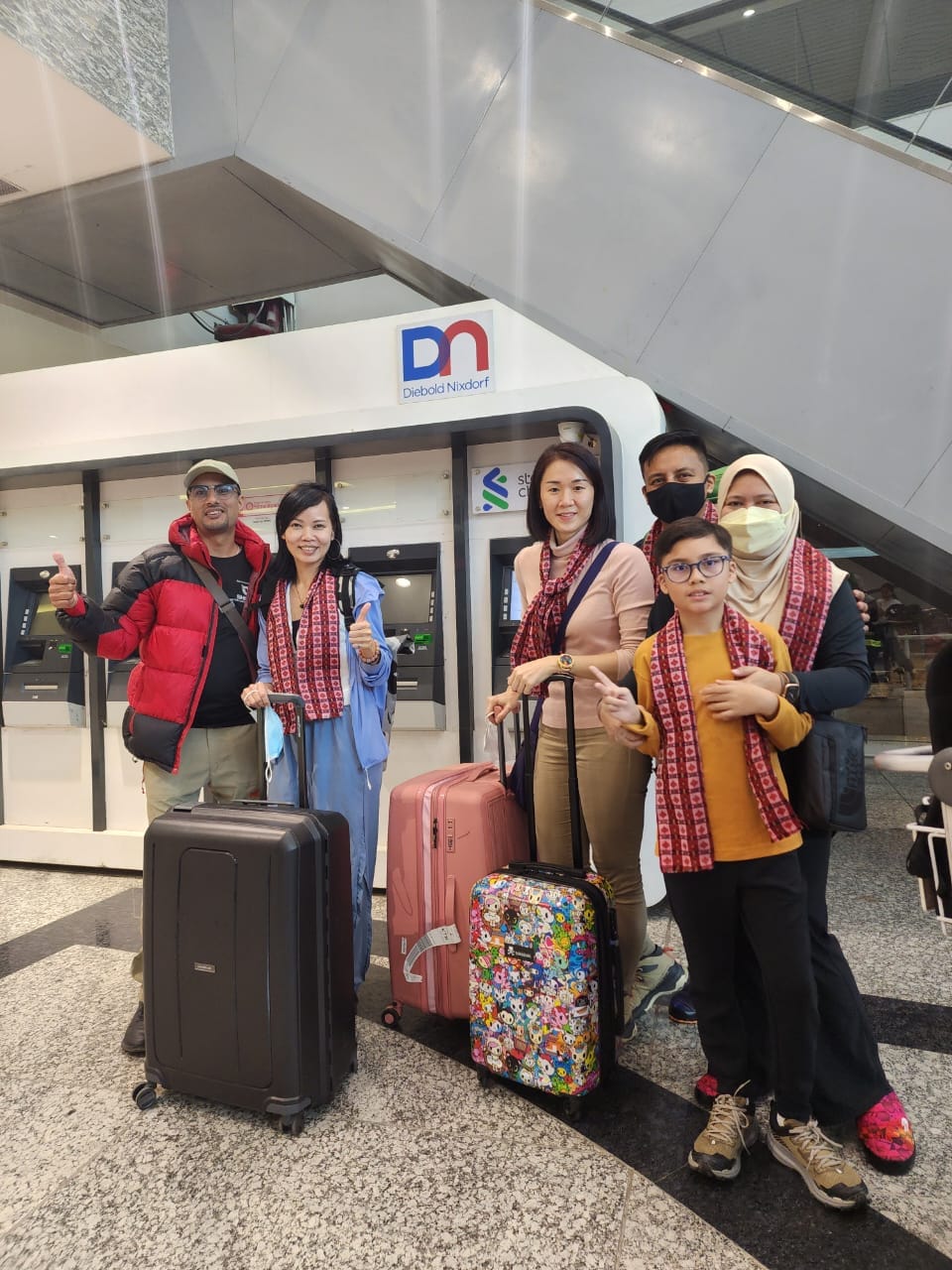
Upon arrival at Tribhuvan International Airport, our team from Nature Heaven Treks and Expedition, recognized by our company banner, will warmly welcome you at the terminal gate. We’ll assist with your luggage and ensure a smooth transfer to your hotel in a private car. Depending on your location in Kathmandu, you’ll have the opportunity to rest and acclimate. In the evening, join us for a welcome dinner with the Best Trekking Agency in Nepal team. Enjoy delicious cuisine while soaking in the vibrant atmosphere of Thamel, setting the tone for your exciting Nepal Tour and Himalayan adventure
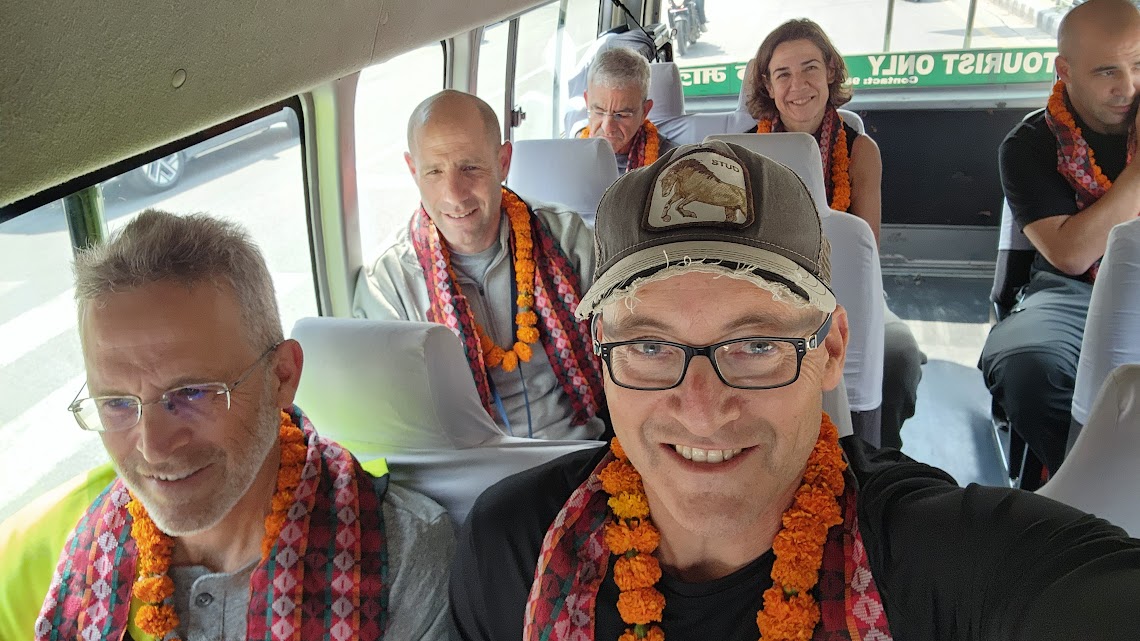
Before starting your Everest Base Camp Trek or other Nepal Treks, you’ll have a day to explore Kathmandu's historical wonders and prepare for the adventure ahead. In the morning, our experienced guide will accompany you on a tour of iconic sites such as the Monkey Temple, Boudhanath Stupa, Pashupatinath Temple, and Patan Durbar Square. These landmarks are rich in Nepali art, architecture, and culture, offering a fascinating glimpse into Nepal’s heritage. After lunch, our Nature Heaven Treks and Expedition office will host a brief meeting where the guide will provide a comprehensive introduction to the trek, share essential tips, and assist with packing. We provide duffel bags for your trek, and the guide will help you acquire any necessary trekking gear, ensuring you’re fully prepared for your upcoming Himalayan adventure.
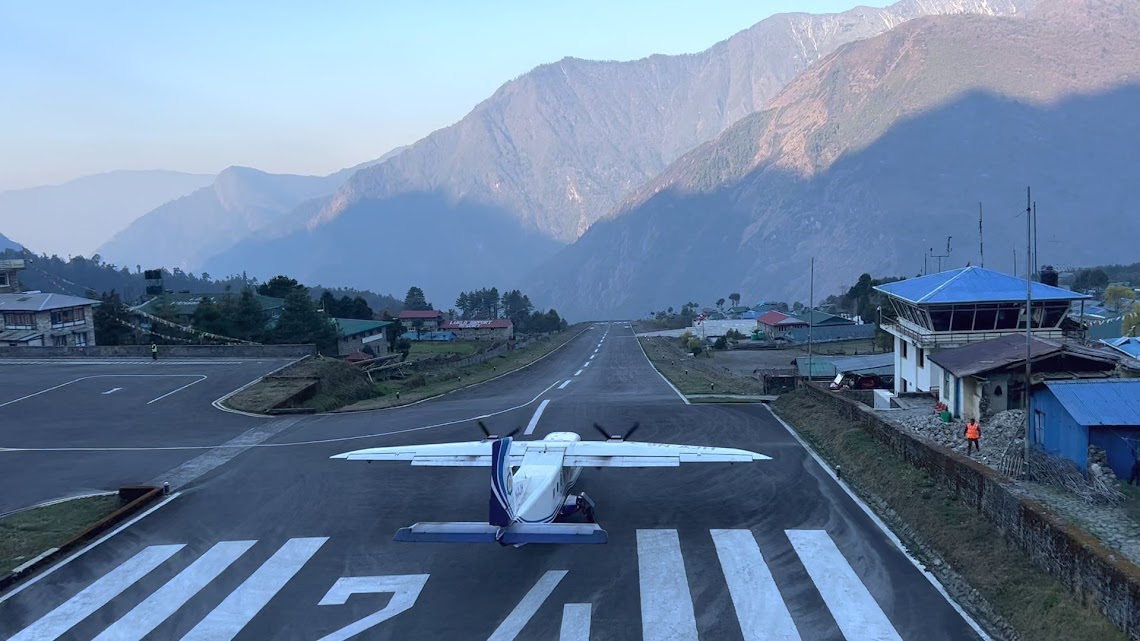
Everest Base Camp Trek begins with an exciting morning flight to Lukla, an adventure in itself that sets the tone for the journey ahead. After landing, porters join the group, and the trek toward Phakding village begins. Phakding, our first stop, is located just below Lukla and offers a peaceful start to the trek. The trail follows the Dudh Koshi River, winding through lush forests and passing through the charming Cheplung village at an altitude of 2,660 meters. Continuing on, the route leads past Thado Koshi Gaon at 2,580 meters, with multiple suspension bridge crossings along the way. This section of the trek offers breathtaking views of the Kongde Ri and Kusum Kanguru peaks, setting the stage for the scenic wonders of the Himalayas in Nepal.
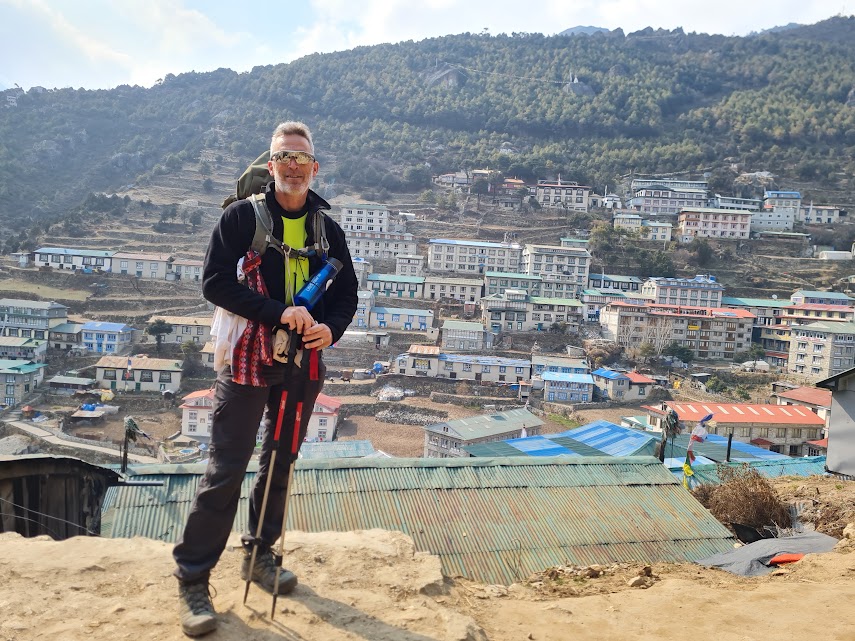
After breakfast, the Everest Base Camp Trek continues through vibrant rhododendron forests toward Toktok village, located at 2,760 meters. The trek progresses, passing through Bengkar village at 2,630 meters, before crossing two hanging bridges leading to Monjo at 2,835 meters. In Monjo, trekking permits are registered as we enter Sagarmatha National Park, a UNESCO World Heritage Site that is home to Mount Everest and renowned for its unique biodiversity. The journey from Monjo involves crossing several suspension bridges and tackling a steep ascent to Namche Bazaar, the bustling trading hub of the Khumbu region. Namche Bazaar offers a blend of modern amenities and traditional Sherpa culture, making it a perfect place for trekkers to acclimatize and experience the charm of the Himalayas in Nepal.
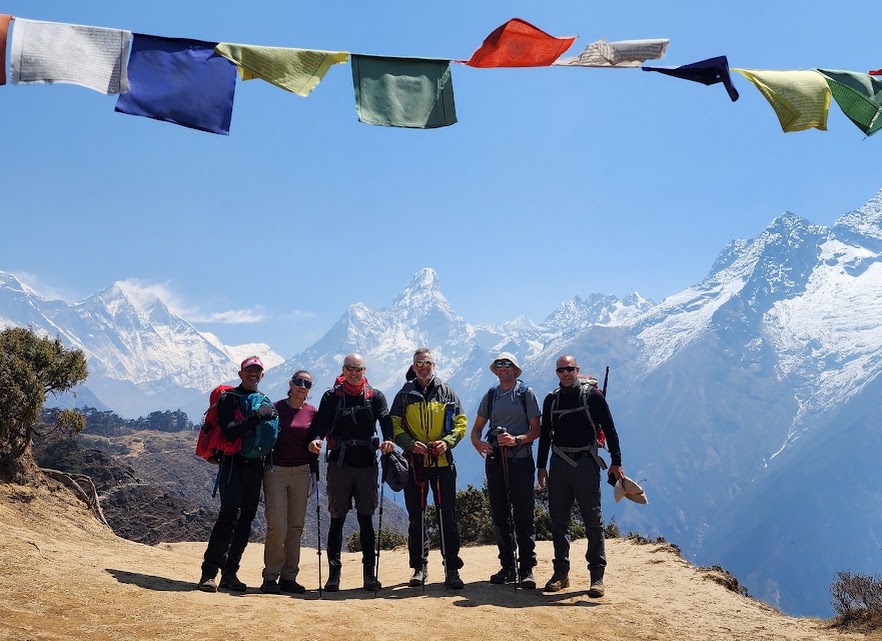
Today is a crucial acclimatization day in Namche Bazaar, an important stop on the Everest Base Camp Trek. The morning begins with a hike to Hotel Everest View, where trekkers are rewarded with the first breathtaking views of Mount Everest, along with Lhotse, Nuptse, Thamserku, Kongde Ri, and Khumbila. Depending on energy levels, the trek may extend to Khumjung Monastery or return to Namche Bazaar for relaxation. As the largest Sherpa settlement in the Khumbu region, Namche Bazaar also serves as a vibrant tourist hub with cafes, pubs, souvenir shops, restaurants, and museums, creating a lively atmosphere. A visit on Saturday offers the chance to experience the Saturday Market, a cultural highlight of the region, where trekkers can immerse themselves in the local culture and buy unique souvenirs. This combination of breathtaking views and local charm makes Namche Bazaar a must-see destination during the trek.
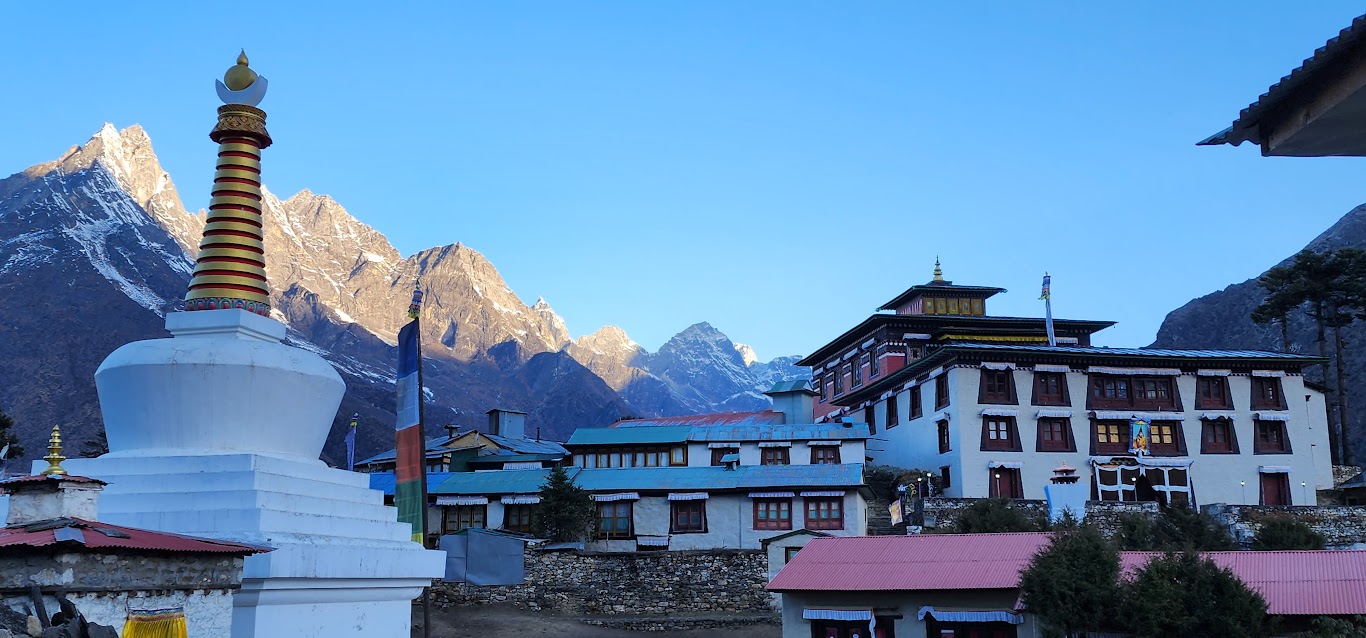
Departing from Namche Bazaar, the trek heads towards the peaceful Tengboche village, navigating the rugged terrain of the Himalayas. The trail initially leads to Kyangjuma at 3,550 meters, where trekkers are rewarded with stunning mountain landscapes. After a zigzag ascent followed by a descent, the trek reaches Phungi Thenga at 3,250 meters. Crossing a bridge, the route continues through lush forests and gradually ascends to Tengboche village. This section of the trek is famous for its breathtaking Himalayan views, with Ama Dablam, Lhotse, Everest, and Nuptse towering above. The panoramic vistas in Tengboche offer an unforgettable highlight of the journey, making it one of the most scenic spots on the Everest Base Camp Trek.
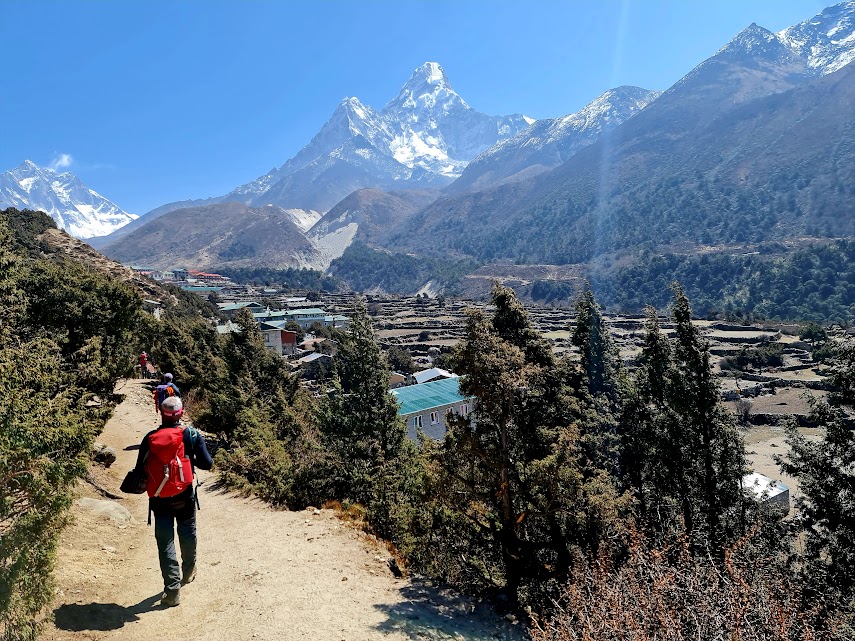
Leaving Tengboche village, the trek descends through enchanting rhododendron forests towards Deboche, situated at 3,320 meters. This section of the trail offers opportunities to spot wildlife, including blue sheep, musk deer, and the vibrant monal pheasant. Continuing onward, the trail crosses a bridge over the Imja Khola River, leading to the traditional Sherpa village of Pangboche at 3,930 meters, providing a glimpse into authentic local culture. Another hanging bridge crossing takes us past Shomare at 4,010 meters, en route to Dingboche. Before reaching Dingboche, the trail meanders through Orsho at 4,190 meters, with each step of the journey offering stunning views of the majestic Himalayas.
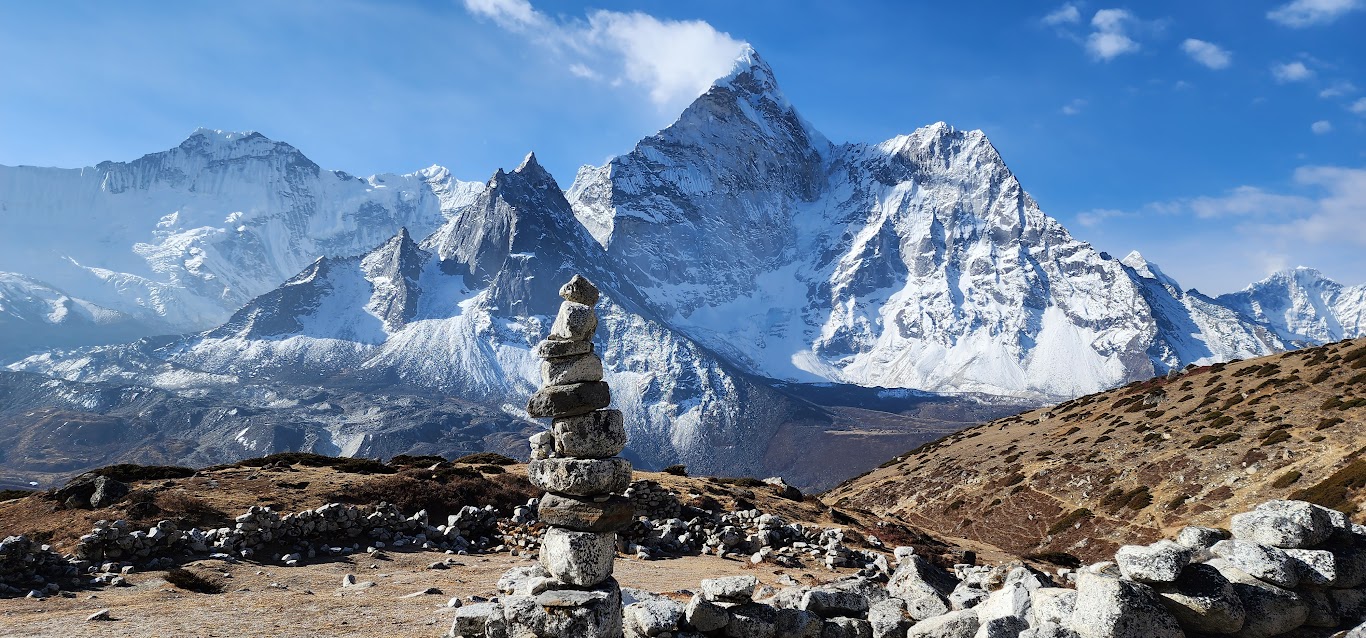
In Dingboche village, we take a crucial rest day for acclimatization to the high altitude. The day begins with a morning hike to the base of Nangkar Tshang, where trekkers are rewarded with breathtaking views of towering peaks like Lobuche, Lhotse, Nuptse, Kangtega, Ama Dablam, and Cholatse. This stunning panorama perfectly captures the essence of the Himalayas. After the hike, the remainder of the day is spent in Dingboche village, allowing trekkers to relax and recover. It's also an excellent opportunity to interact with the local Sherpa people, learn about their culture, and experience their lifestyle, all while being surrounded by the awe-inspiring natural landscape.
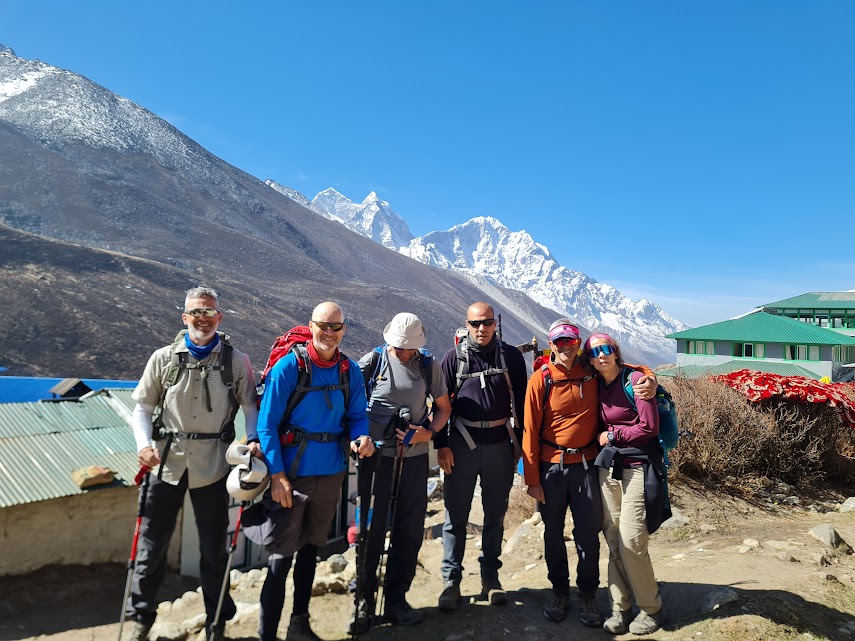
After departing from Dingboche, the trek begins with a challenging ascent, initially navigating a steep slope to Dusa at an altitude of 4,503 meters. The trail continues its upward path towards Dughla, reaching 4,620 meters, where trekkers encounter a bridge just before the village. Beyond Dughla, the trail passes poignant memorials dedicated to climbers and Sherpas lost on Everest, offering a moment of reflection. The journey intensifies as trekkers face a steep climb over the Dughla Pass at 4,830 meters, transitioning onto the glacier. As the trek continues towards Lobuche village, the landscape undergoes a dramatic transformation, revealing a stark, rocky terrain devoid of vegetation— a vivid reminder of the rugged, Himalayan beauty.


On this day, an exhilarating ascent to Kala Patthar sets the stage for the trek’s conclusion. Departing before dawn, trekkers aim to reach this famous viewpoint in time to witness the sunrise illuminating Mt. Everest and surrounding peaks in a breathtaking display. Kala Patthar offers an unparalleled view of Everest and the expansive Himalayan range, a moment of profound awe and reflection. After this early morning venture, the trek returns to Gorak Shep before retracing the trail toward Dughla. The descent continues from Dughla, ultimately reaching Pheriche village. This section transitions from the challenge of ascent to a mostly downhill trek, interspersed with minor ascents, guiding trekkers through the changing landscapes back to the comfort of Pheriche.
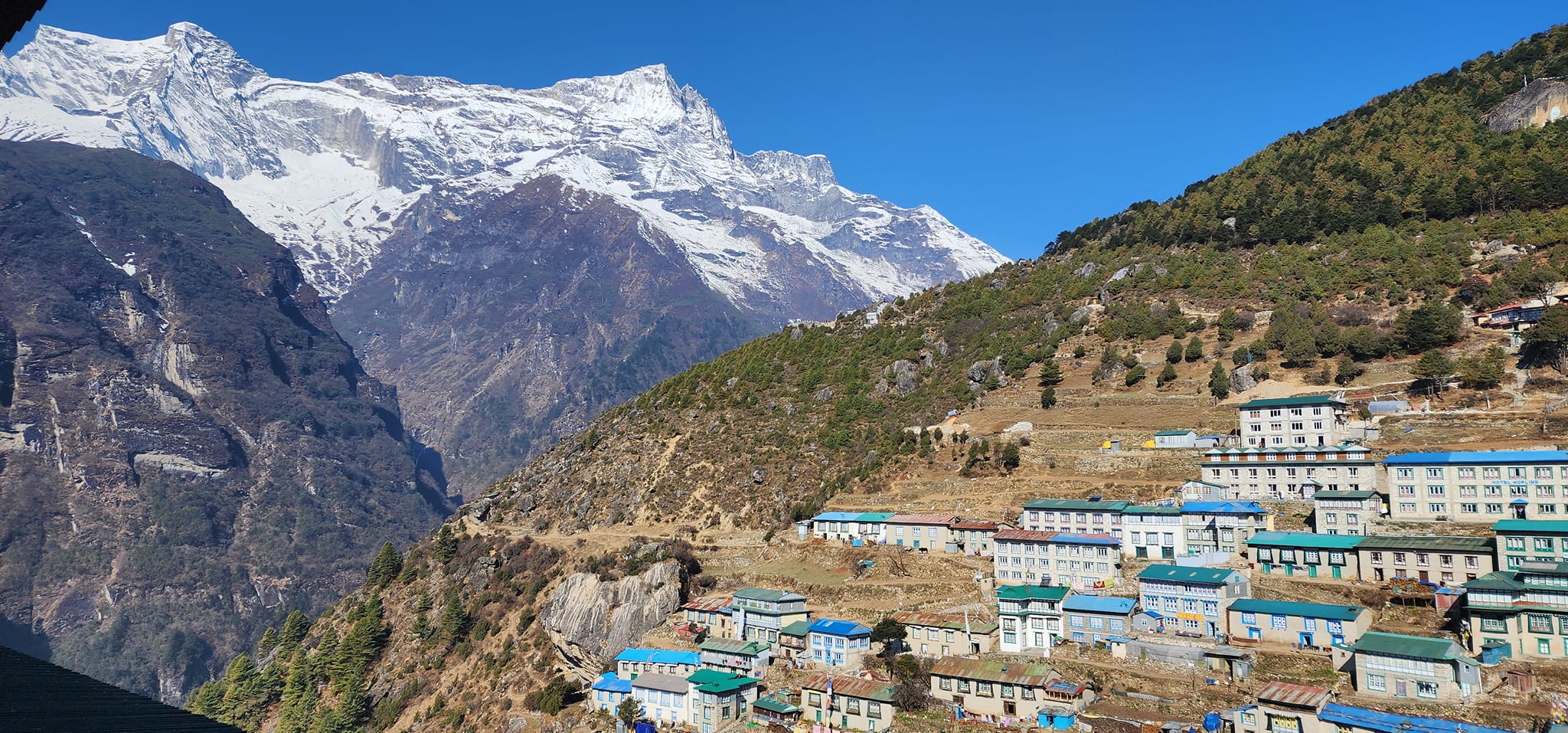
Today, the trek follows a descending route back to Namche Bazaar, retracing familiar paths through the stunning landscapes of the Khumbu region. The journey begins with a return to Pangboche village, passing through terraced fields and alpine forests. The trail continues, winding through lush rhododendron woods to Tengboche village, before descending to Phungi Thenga. The final stretch leads along a winding trail back to the vibrant and welcoming Namche Bazaar, offering trekkers a chance to reflect on the journey while immersing in the Sherpa culture of this bustling town.
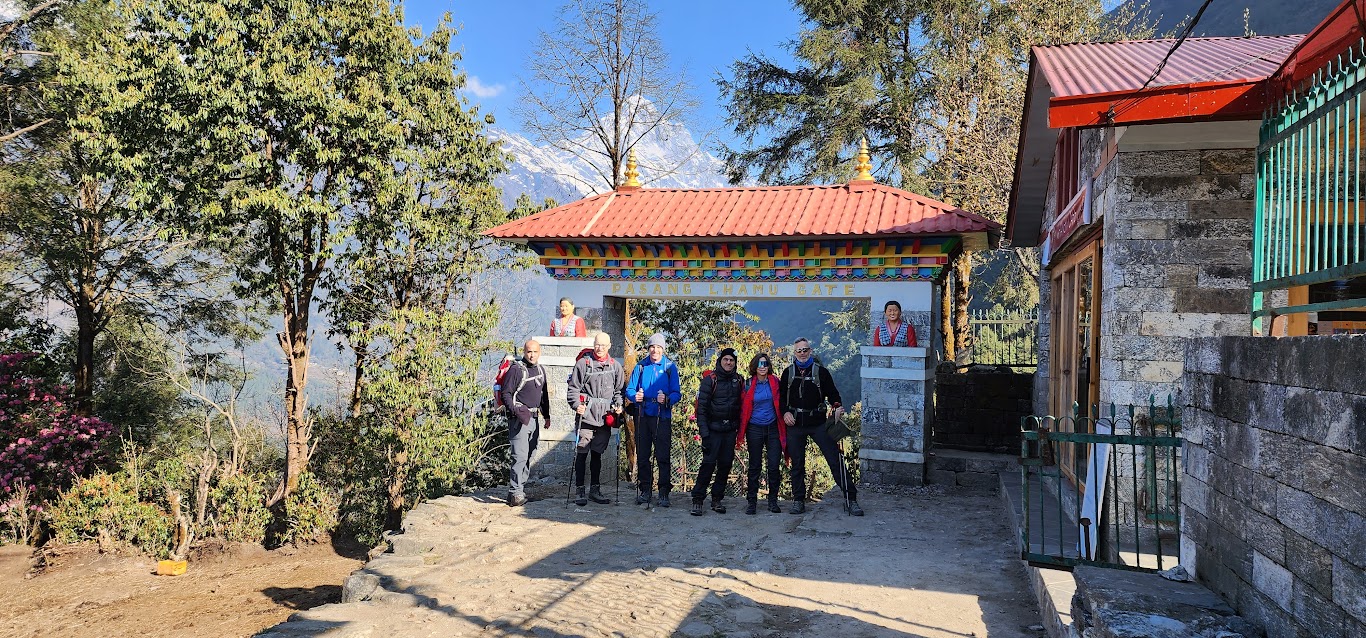
The journey from Namche Bazaar begins with a steep descent through rugged foothills, transitioning into forested paths. This segment takes trekkers through remote Sherpa settlements, immersing them in peaceful landscapes adorned with magnolia and rhododendron forests. The route involves crossing multiple suspension bridges over the Dudh Koshi River, gradually leading to Phakding village. After departing Phakding, the trail retraces its steps towards Lukla, ascending alongside the Dudh Koshi River through lush forests. This final leg of the trek is marked by passing small villages, crossing additional bridges, and capturing the essence of the Himalayan trail, concluding in Lukla
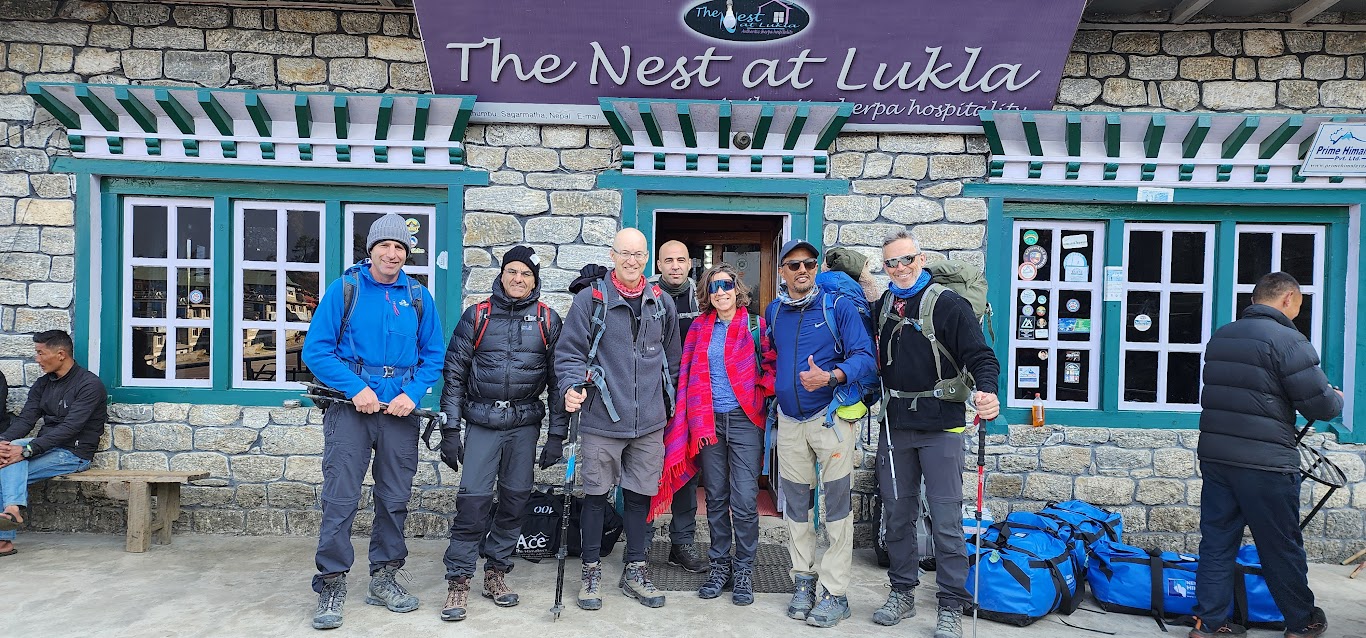
The return to Kathmandu marks the end of the Everest Base Camp trek, with an early morning flight offering trekkers a final aerial view of the majestic Himalayan mountains. The rest of the day is at leisure in Kathmandu, allowing for relaxation, sampling local Nepali cuisine, and exploring local markets for souvenirs. The adventure officially concludes with a farewell dinner in the evening, where trekkers receive a certificate celebrating their successful expedition to Everest Base Camp.
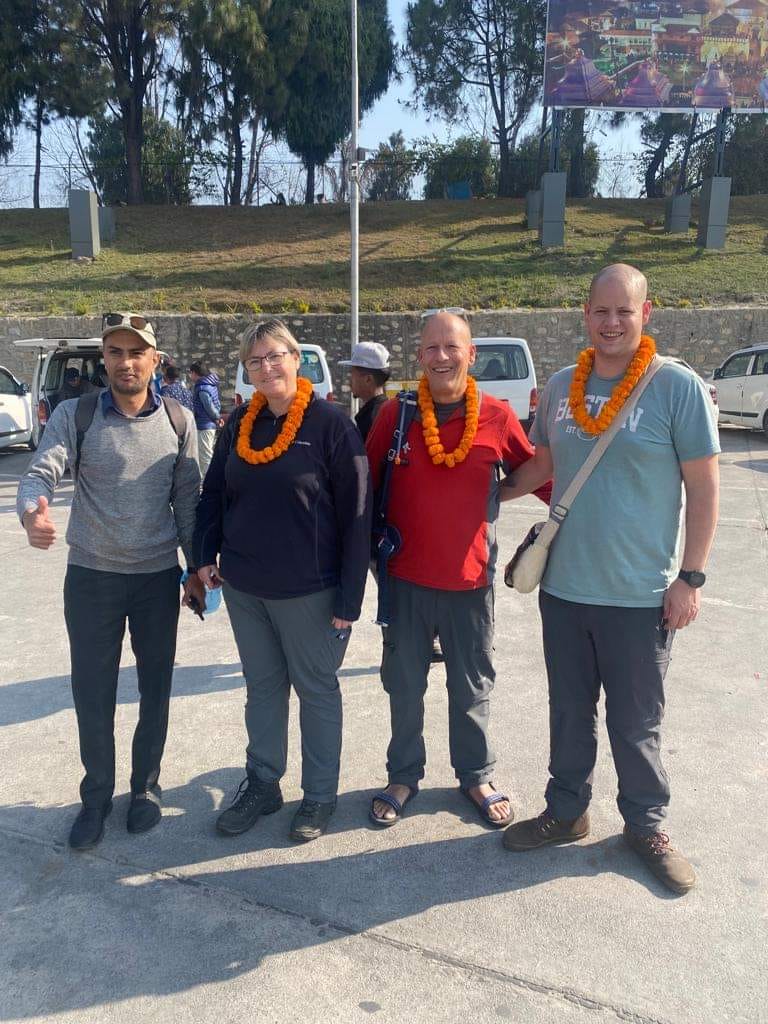
Everest Base Camp Trek with Nature Heaven Treks and Expedition concludes today with our team ensuring a smooth transfer to the Kathmandu international airport in line with your flight schedule. Our commitment to your adventure continues; if you have additional time, we are happy to recommend both adventurous and relaxing trips within Nepal to further enrich your journey. We advise allowing one or two extra days beyond the trek to account for potential weather-related delays, as flights to and from Lukla are highly dependent on weather conditions.
Allow our experts at Nature Heaven Treks and Expedition to help you Plan one of the most Memorable Vacations based on your interests with their in-depth knowledge of the Himalayas, they can craft the journey of your dreams considering your preferred location, time frame, and Budget
During the peak seasons for the Everest Base Camp Trek (March to May and September to November), all the Lukla flights will be operated from the Manthali Airport due to congestion at Tribhuvan Airport.
The Everest Base Camp Trek is considered challenging due to its high altitude, steep climbs, and harsh climatic conditions.
The trek to Everest Base Camp typically takes about 12 to 14 days, depending on the specific route and pace.
The cost of trekking to Everest Base Camp varies widely, typically ranging from $1,200 to $3,000, depending on the tour package and services included.
A beginner can complete the Everest Base Camp trek with proper preparation, training, and acclimatization, despite its challenging nature.
Yes, traditional people can trek to Everest Base Camp if they are physically fit and well-prepared for high-altitude conditions.
To reduce the impact of trekking on Everest Base Camp, choose eco-friendly practices and support local conservation efforts.
The best times to visit Everest Base Camp are during the pre-monsoon season (March to May) and post-monsoon season (late September to November).
Drinking alcohol on Everest is strongly discouraged due to its effects on dehydration and altitude sickness, which can be dangerous.
Staying overnight at Everest Base Camp is generally not permitted for trekkers; most spend the night in nearby Gorak Shep instead.
You do not need a tent for the Everest Base Camp trek as there are established teahouses along the route for accommodation.
Yes, there is WiFi available at Everest Base Camp, but it is typically provided through satellite connections and may incur charges.
Temperatures on the Everest Base Camp Trek can range from -10°C to -20°C at night, particularly during the colder months.
Yes, the Everest Base Camp Trek can be crowded, especially during peak seasons in spring (March to May) and autumn (September to November).
The oxygen level at Everest Base Camp is about 50% of what it is at sea level, significantly affecting breathing and exertion.
There are no permanent shops at Everest Base Camp itself; however, basic goods are available at teahouses and shops in Gorak Shep.
Leave a review